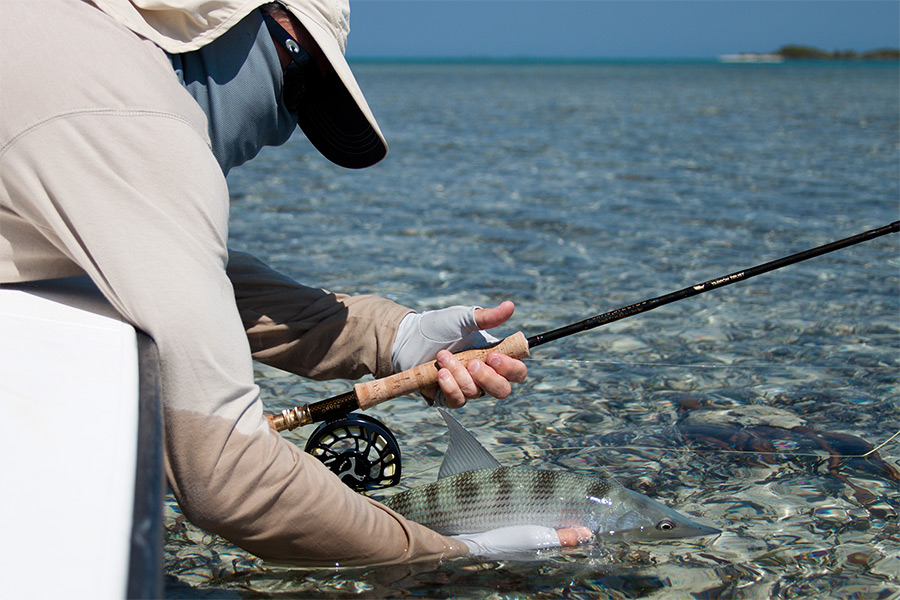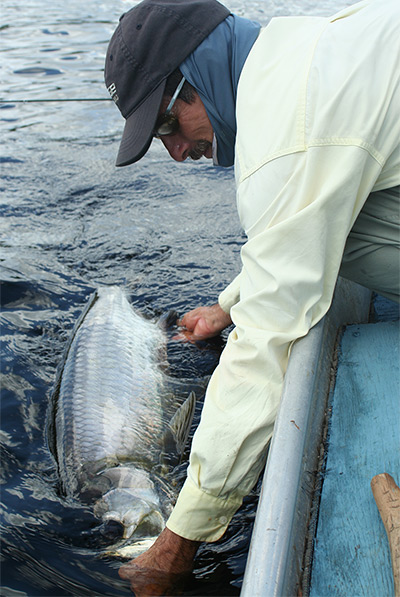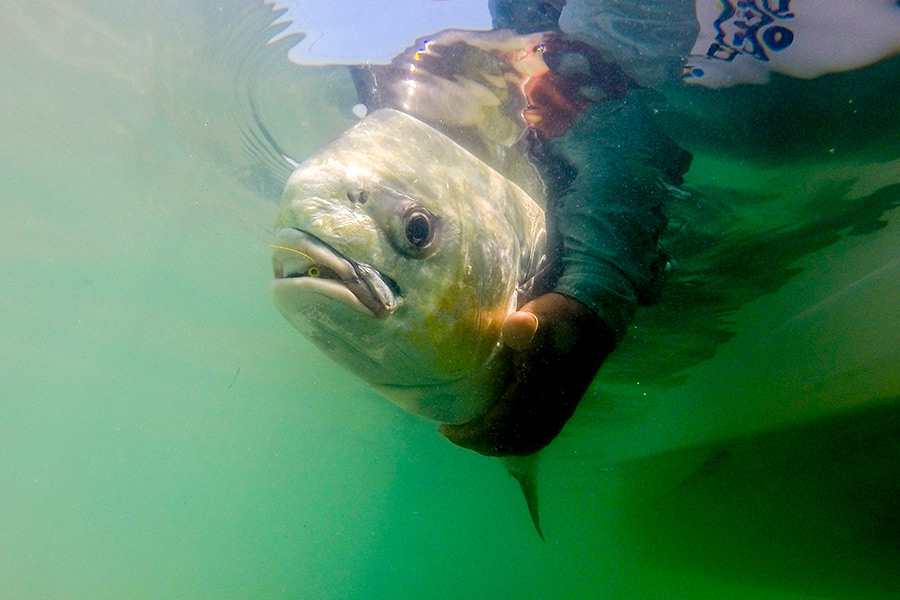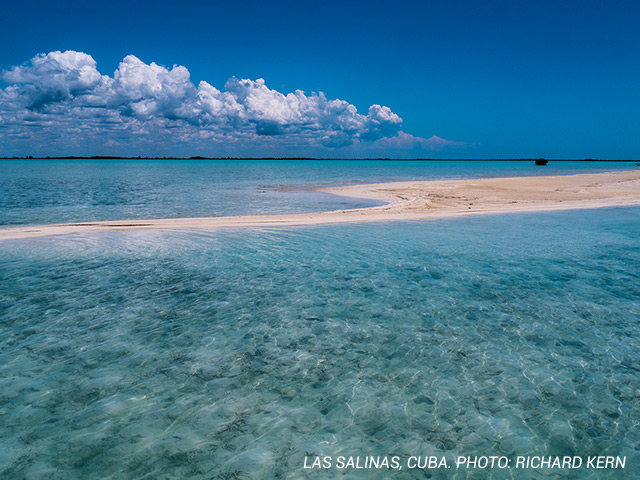Collaborative research efforts continue between BTT and University of Havana
BY CHRIS SANTELLA
Political regimes change…and sometimes they don’t. Either way, it doesn’t mean a thing to fish.
“Nature does not understand politics,” ventured Dr. Jorge Alberto Angulo-Valdes, a scientist who splits his time between the Center for Marine Research, University of Havana and Eckerd College in St. Petersburg. “Nature works the way it works, and it’s up to us to understand it.”
One natural process scientists have come to understand: Many fish species, including bonefish, tarpon and permit, make the connection between the shores of Cuba and the coasts of the Florida Keys and mainland at some point in their lifecycles. Indeed, mathematical models suggest that many bonefish larvae in the Florida Keys are coming from Cuba and Mexico, and genetics results suggest the same is true for tarpon and permit. This is one of several good reasons for American and Cuban scientists to work together. Bonefish & Tarpon Trust has been fostering such collaboration since 2016.
Dr. Angulo-Valdes, who has been with the University of Havana since 2001, shared how he first connected with BTT. “My work has always been involved with mangrove and coral reef ecosystems. In 2015, I began studying the impacts of sport fishing in Cuba. [Sport fishing, it should be noted, has a very different connotation in Cuba than it does in the United States. It refers to fishermen who are using hook and line, but are fishing for subsistence and commercial sale.] We realized that in addition to species like grouper, mullet and snapper, sport fishermen were taking bonefish, tarpon and permit. To measure the impact on flats species, we decided to develop a program. I came to Florida around this time, and met Dr. Aaron Adams, BTT’s Director of Science and Conservation. He was interested in our research, and introduced me to the kind of projects BTT was doing. We both agreed it was a good chance to collaborate and conduct some joint research.”

From a conservation perspective, Cuba presents quite a different picture than Florida. “Most of the places where flats fishing occurs are in Marine Protected Areas (MPAs),” explained Dr. Adams, who is also a Senior Scientist at Harbor Branch Oceanographic Institute of Florida Atlantic University. “Catch and keep fishing is not allowed in these areas, though lobster harvest is permitted. There are no pollution issues in the MPAs, and overall, the habitats are in good shape.”
“Relative to Florida, the coastal habitat in much of Cuba is well- protected,” Dr. Angulo-Valdes added. “Human intervention has been minimal, largely because Cubans haven’t had the money to develop the coastline. But the commercial and sport fishing have certainly caused damage. Though the fishery law is broad, enforcement is lackadaisical. Different fishermen are allowed different types/sizes of boats, which determines how much they can fish and where they can fish. They have to provide a certain poundage of fish per month to the government co-op. Anything beyond that allotment—especially the higher quality fish—is sold on the black market.”
“We’ve found that in protected areas where Avalon operates fly-fishing or diving operations, illegal fishing is limited,” added Dr. Fabian Pina Amargos, a professor of protected areas at the Center for Marine Research of the University of Havana and an environmental consultant with Avalon Diving operations in Cuba. “The presence of the skiffs on the water deters the poachers.”
To date, Dr. Angulo-Valdes and his cohorts have focused their surveying efforts on non-protected areas near MPAs in an effort to determine how sport fishery activities are impacting species in protected areas. They’ve interviewed more than 100 fishermen thus far, gathering socio-economic information about the fishermen, reviewing the occurrence of tarpon, bonefish and permit in their harvest and fostering trust that will lead to positive relationships. “We’ve been building environmental awareness with the sport fishermen,” Dr. Angulo-Valdes added. “We believe that if we can convince them to not take certain species, the fish populations will bounce back, as the habitat is intact.”
"BTT has been one of the best American organizations I’ve worked with,” Dr. Angulo-Valdes continued. “Working in Cuba can be sensitive, but they’ve been smart and patient. They have their feet on the ground."
The sport fishing analysis and bonefish aggregation harvest studies unfold alongside several ongoing projects: tagging efforts of flats species to chart fish movements in and out of MPAs to determine if adequate range has been protected; tissue sampling to determine the extent that the fish populations in different parts of the Caribbean, Gulf of Mexico, and Atlantic are connected; and tagging of juvenile and mid- size tarpon to determine migration patterns, and how connected these populations are to populations in Florida.
New facets of the Cuba-BTT collaboration are continuing to take shape. Working with Eckerd College, Dr. Angulo-Valdes is assembling a program to take students south to participate in research projects. “Our goal is to maximize cultural exchange,” he said.
“Our affiliation with BTT has enabled us to increase our research efforts,” Dr. Amargos added. “We’ve also been able to present our findings at symposiums, exposing more scientists to our work.”
“BTT has been one of the best American organizations I’ve worked with,” Dr. Angulo-Valdes continued. “Working in Cuba can be sensitive, but they’ve been smart and patient. They have their feet on the ground.”

“Our focus in working with international partners is to never tell people what to do,” Dr. Adams from BTT said. “We work to give support and guidance to help our partners gather information and do what’s needed.”
If Dr. Angulo-Valdes could snap his fingers and make things happen to improve our shared fisheries, here’s what he’d do. “In Cuba, I’d want to see more control on fisheries management, better control on fishing gear. In Florida, I’d love to see people be more nature-oriented, to modify consumption habits that create so much waste. Many people simply don’t realize how their behavior impacts the natural world. Lastly, I’d love see even more collaboration between Cuban and American scientists. If we can better pool resources and share information, we’ll have better outcomes.”
Chris Santella is the author of 21 books, including the popular “Fifty Places” series from Abrams. He’s a regular contributor to The New York Times, The Washington Post, American Angler and Trout.





